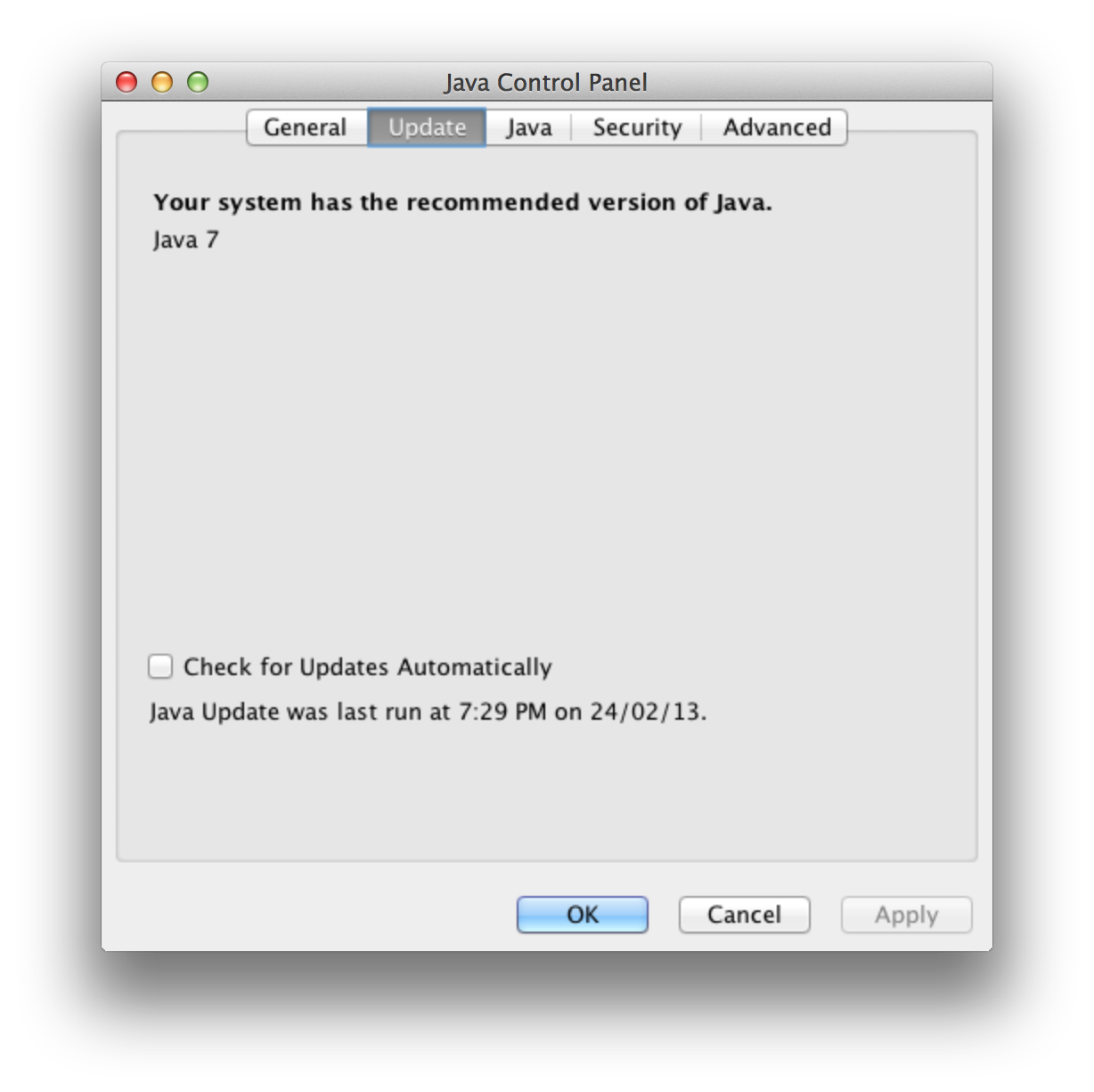Last updated: January 16, 2019
Update: Please see our Java Support in Safari 12 article for the latest information on Java support in Safari on macOS. The option to allow plug-ins described below is no longer supported by Safari.
Cross-play with Java Edition: Windows, Mac, and Linux Allows you to play with other Java edition players. Split screen multiplayer (online multiplayer requires subscription sold separately) Playing split screen allows up to four players to play on the screen at the same time. There are several ways for updating Java on your Mac machine. One of the easiest way to locate, download and install Java is to use Software Update. For those who are unfamiliar with Software Update, click on the Apple menu (located on top-left corner of your Mac’s screen) and select Software Update. Important Oracle JDK License Update The Oracle JDK License has changed for releases starting April 16, 2019. The new Oracle Technology Network License Agreement for Oracle Java SE is substantially different from prior Oracle JDK licenses. The new license permits certain uses, such as personal use and development use, at no cost - but other uses authorized under prior Oracle JDK licenses may.
No matter which web browser you use on your computer, you will need the Java plug-in from Oracle in order to view content that uses Java, such as Java applets. The Safari web browser on Mac from Apple is no exception. Java applets are common on the Internet. It is important, therefore, to know how to enable and disable Java in Safari on Mac if it is your web browser of choice.
First, please be certain the version of Java on your computer is current. Once you have verified Java is installed on your computer, please follow the instructions below to learn how to enable or disable Java in Safari on Mac.
1. Launch the Safari application, and click the Safari file menu. Select Preferences from the drop-down menu.
2. The Preferences dialog will launch in a new window. Click the Security icon.
To enable Internet plug-ins, including Java, to load in Safari, check the Internet Plugins: Allow Plug-ins check box. Unlike Safari on Windows, there is no individual check box for Enable Java for Safari on Mac.
3. When you encounter Java content in Safari, Safari will block the content from loading. You will see a notification in the browser window where the Java content would otherwise load:
4. Click the right-arrow in the notification. A Do you want to trust the website… dialog will display.

In this case, we visited the Java.com web site to load a test Java applet. Since we trust the web site, we clicked the Trust button to allow java.com to use the Java plug-in. When we re-visit the Java content on this web site, the Java content will now display.
5. You can manage your trusted web sites, and choose degrees of trust, by returning to the Security settings of Safari’s Preferences window. Adjacent to the Internet Plugins: Allow Plug-ins check box, click the Website Settings… button.
A new dialog will launch. The dialog displays all of the Internet plug-ins currently installed. To manage the web sites you have trusted to use the Java plug-in, click Java in the left navigation pane. The list of web sites you have already trusted will display.

Latest Java Version For Mac
Use the pull-down menu adjacent to the web site in the list to choose a level of trust you want to extend to this site. You may choose from Ask, Block, Allow or Allow Always (or Run In Unsafe Mode). You may delete a web site from this list by highlighting it with your mouse, and clicking the minus button at the bottom of the list.
Thank you for visiting Tech Help Knowledgebase to learn how to enable and disable Java in Safari on Mac.

Tech Help Knowledgebase creates how-to articles and video tutorials for common issues, and provides technical support for the categories covered by our site.
Get Support.

Java, a runtime environment that works 'behind the scenes' to let you use many Web sites, online services, and applications, is no longer built in with Macintosh operating systems. Apple's October 2012 software update removes the Java plugin from all Web browsers.
Following recent security vulnerabilities with Java, we recommend that Mac OS X users check their version of Java and keep it up-to-date. If Java is not installed, we recommend that you postpone installing it until absolutely necessary. If you currently have Java installed on your computer, but are not using it, we recommend disabling it. More...
Follow the instructions below to download and install the latest version of Java for Mac.
Java Update Mac Sierra
- Verify whether you have the current version of Java through the Java Web Site:
http://www.java.com/en/download/installed.jsp - If you do not have the current version of Java, go to the Download Java for Mac OS X page: http://www.java.com/en/download/mac_download.jsp?locale=en
- Review the End User Agreement, then click Agree and Start Free Download. The file will save to the Downloads folder of your computer.
- On your computer, locate and open (double-click) the Java for Mac installer (jre-7u9-macosx-x64.dmg). A Finder window will open and display the contents of the installer.
- Double-click the JavaForMacOSX10.7.pkg file and follow the wizard’s prompts to install the program on your computer.
Note: You may be asked to enter your computer’s administrator password as part of the installation process. This is not your UMass Amherst IT Account NetID or password, it is the password you use to log into your Mac. If you do not have administrator privileges for your computer, contact your IT administrator. - A confirmation message will appear when the installation is complete. Click Close to exit the Java installer.
You should now be able to use Java-dependent web sites, applications, and resources on your computer and online. If you continue to have problems, contact the IT Help Center.
